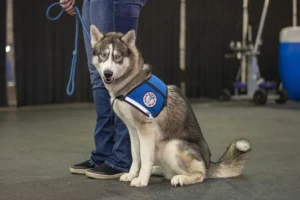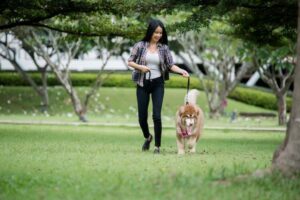Dogs can eat all sorts of things. In fact, they’re not picky at all! They’ll eat just about anything that you give them, from a slice of pizza to a fresh-from-the-oven chocolate chip cookie to a tasty piece of chicken. Dogs can be trained to instinctively avoid dangerous foods and learn which ones are OK to eat, but there are some foods that they simply should not eat.
What foods can dogs eat?
Well, it depends on what you mean by “can.” For most people, this means, “Is it poisonous?” or even, “Is it poisonous for my dog in particular?” These are two very different questions that require two very different answers.
Dogs have specific dietary requirements not dissimilar to our own dietary requirements. They are omnivores, so they can eat meat and vegetables. However, the meat has to be limited to small amounts of lean meats such as beef or poultry, with all fat trimmed off before feeding it to your dog. Dogs cannot eat fatty foods because it will cause them to have pancreatitis which is very painful for dogs. Vegetables need to be limited too, but there are some that are safe for dogs to eat in limited quantities. Broccoli is one example, along with carrots and cucumbers. Be careful though not to feed your dog anything spicy or salty because these foods may upset their stomachs.
The same goes for fruits – your dog can eat fruits, but be careful with what kind of fruits you feed your dog. There are some that may be bad for their digestive system and cause a lot of gastric distress. A few examples of safe fruits to feed your dog include apples, bananas and blueberries.
Properly cooked bones from beef or poultry can also be fed to dogs as some sort of treat. Just make sure they’re not sharp enough to hurt your dog’s mouth as it chews on them, and never cook the bones yourself at home because cooking will make the bones brittle and dangerous for your pet to chew on.

What foods to avoid feeding dogs?
Chocolate and cocoa (found in baked goods, candy, ice cream, etc.) is one of the most well known toxic foods for dogs. This compound can cause vomiting and diarrhea as well as severe agitation and increased heart rate. It’s important to note that dark chocolate has a higher concentration of this chemical than milk chocolate. If you suspect your dog has ingested any amount of chocolate, it’s best to call your veterinarian or emergency veterinary services immediately. Even small amounts can be dangerous for pets!
Another common food to avoid giving your pet is garlic and onions (generally found in dinner dishes such as meatloaf or fried rice). While these foods may not necessarily hurt yourself eating them, they can be dangerous for your dog and will make them severely sick, causing anemia and a decrease in blood clotting ability.
Other foods to avoid: avocados (contain persin, which is toxic to dogs), grapes and raisins (can cause kidney failure), macadamia nuts (cause vomiting and diarrhea in some dogs), yeast dough (causes expansion of stomach or intestines when ingested by a dog).
If My Dog Ate a Food on the Bad List When Should I Take My Dog to the Vet?
If you are concerned that your dog may have eaten something bad, what you should do depends on the type of product your dog ate, how much they ate, and whether or not they seem sick.
Your first step is to monitor your dog’s symptoms and see if they improve or get worse as time goes on. If your dog ate something less than an hour ago and is completely asymptomatic but you can’t be sure, there isn’t a great deal of harm in waiting to watch the situation develop.
If your dog ate a product that was toxic for dogs more than two hours ago and showed no symptoms whatsoever, you should take them for a check up to make sure everything is okay. It would be unusual for a poisoning to take place over such a long period of time but it might happen.
The following are some common signs that most pets will show after ingesting something toxic or harmful:
- Vomiting
- Diarrhea
- Weakness
- Persistent coughing
- Seizures
- Rapid or shallow breathing
If your dog has any of these symptoms, please bring them in to a Veterinarian right away!
Sit Now Stay is available for training assistance and boarding! Plus we can answer most all your common questions when it comes to behavior and dietary needs.





